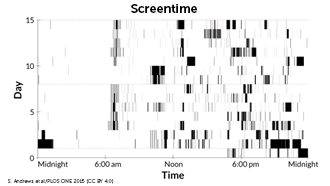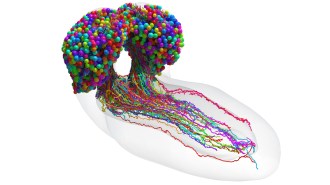Search Results
All about Analyze This: An article type from Science News Explores
Use this lesson plan to learn about an article type called Analyze This that is published by Science News Explores in print and online. You can also access a lesson plan template that can be used with any Analyze This article. Each Analyze This article includes a graph or data visualization that is paired with questions for students to answer and a short story that provides context.
Literacy Practice: KWL Strategy
Use this lesson plan and the provided template to have your students practice the KWL strategy. This note-taking strategy helps students organize their thoughts and reflect on their knowledge around a particular reading.
All about STEM Comics, called Wild Things: An article type from Science News Explores
How can comic strips help teach experimental design of research studies? Use this lesson plan to learn about an article type called Wild Things that is published by Science News Explores in print and online. Wild Things use comic strips that tell the stories of research studies on animals’ biology and behavior. You can also access a lesson plan template that can be used with any Wild Things article.
Literacy Practice: 3-2-1 Strategy
Use this lesson plan and the provided template to have your students practice the 3-2-1 strategy. This literacy strategy is a quick way to check students’ understanding of a concept, reading or lesson. It helps them summarize and organize their thoughts by listing three responses to one prompt, two responses to another prompt and one response to a final prompt.
All about Technically Fiction: An article type from Science News Explores
Use this lesson plan to learn about an article type called Technically Fiction that is published by Science News Explores in print and online. Technically Fiction articles focus on a fictional phenomenon and explain whether it could be possible and the science it would take to make it a reality. You can also access a lesson plan template that can be used with any Technically Fiction article.
Literacy Practice: Concept Map
Use this lesson plan and the provided template to have your students practice creating concept maps for any article. This literacy strategy boosts critical thinking and reading retention by having students organize information and connect important ideas, concepts and terms.
All about Explainers: An article type from Science News Explores
Use this lesson plan to learn about an article type called Explainers that is published by Science News Explores in print and online. You can also access a lesson plan template that can be used with any Explainer article. Explainer articles take a deep dive into a key scientific concept or process.
Literacy Practice: Cornell Note-Taking System
Use this lesson plan and the provided template to have your students practice the Cornell Note-taking System with any article. This literacy strategy organizes notes into two columns that provide structure for note-taking, analysis and review and that will help increase students’ learning, comprehension and retention.

Smartphone Behavior
Smartphone use is changing human behavior and likely influencing our brains. New research is turning up clues as to how our interaction with devices is shaping our memory, navigation and even our happiness. Use the data visualization “Screentime” and graph “What am I missing” to have students analyze data on phone use and behavior.
What’s Going On in the Animal Mind?
Some scientists studying animal behavior are interested in whether nonhuman animals are intelligent and self-aware. In this activity, students will explore recent research and draw on their own experiences to consider how intelligence is defined and that definition might differ from one species to another.

The Fruit Fly Brain in Exquisite Detail
Scientists study the tiny fruit fly to understand how organisms work. In this Guide, students will learn how scientists mapped the nerve cells in a larval fruit fly brain — a task that took 12 years — and learn about those cells.
Counting connections in a tiny brain
Students will answer questions about the online Science News article “Scientists have mapped an insect brain in greater detail than ever before,” which explains how researchers approached finding more than 500,000 neural connections in the larval fruit fly brain. A version of the article, “The fruit fly brain in exquisite detail,” appears in the April 22, 2023 issue of Science News.